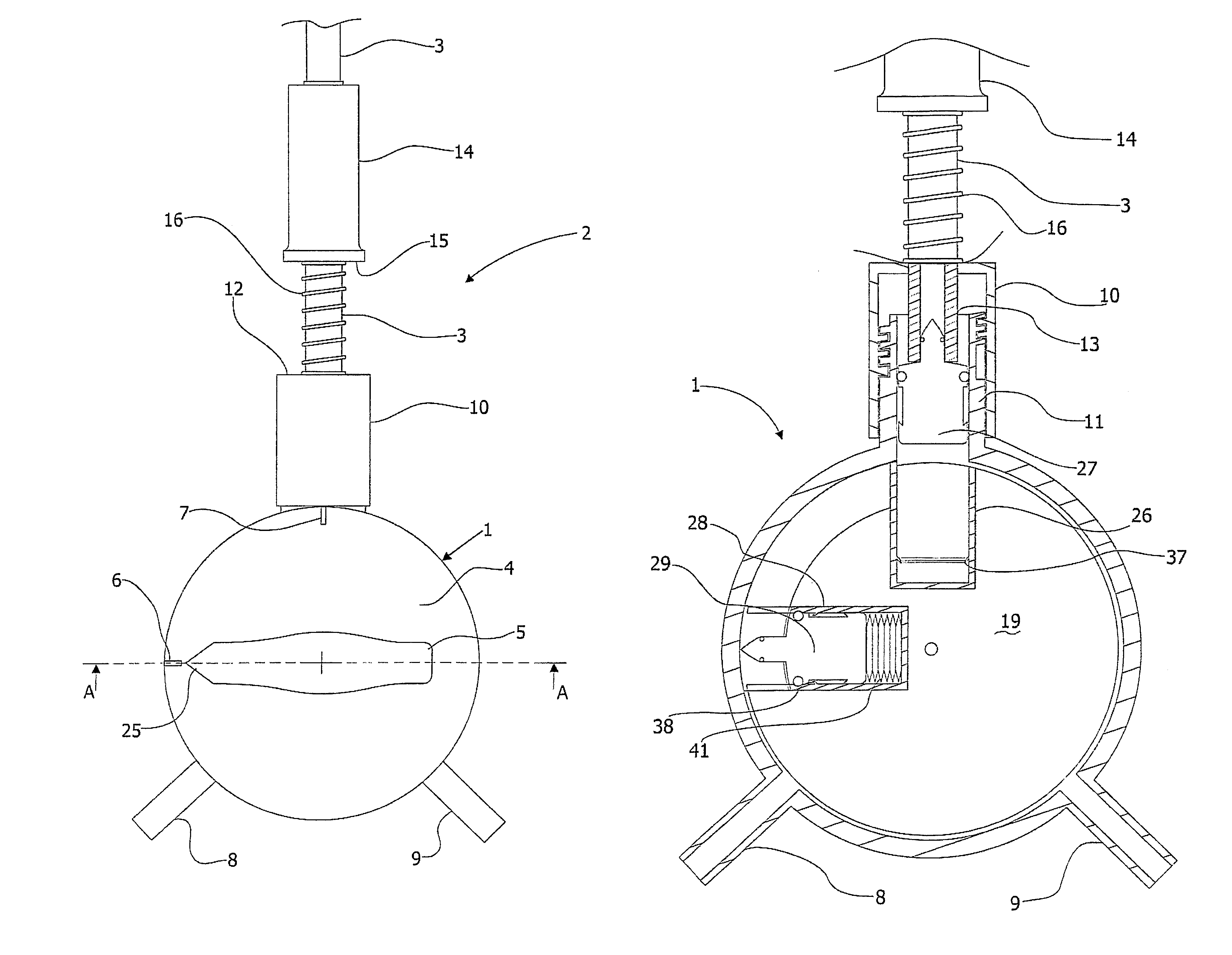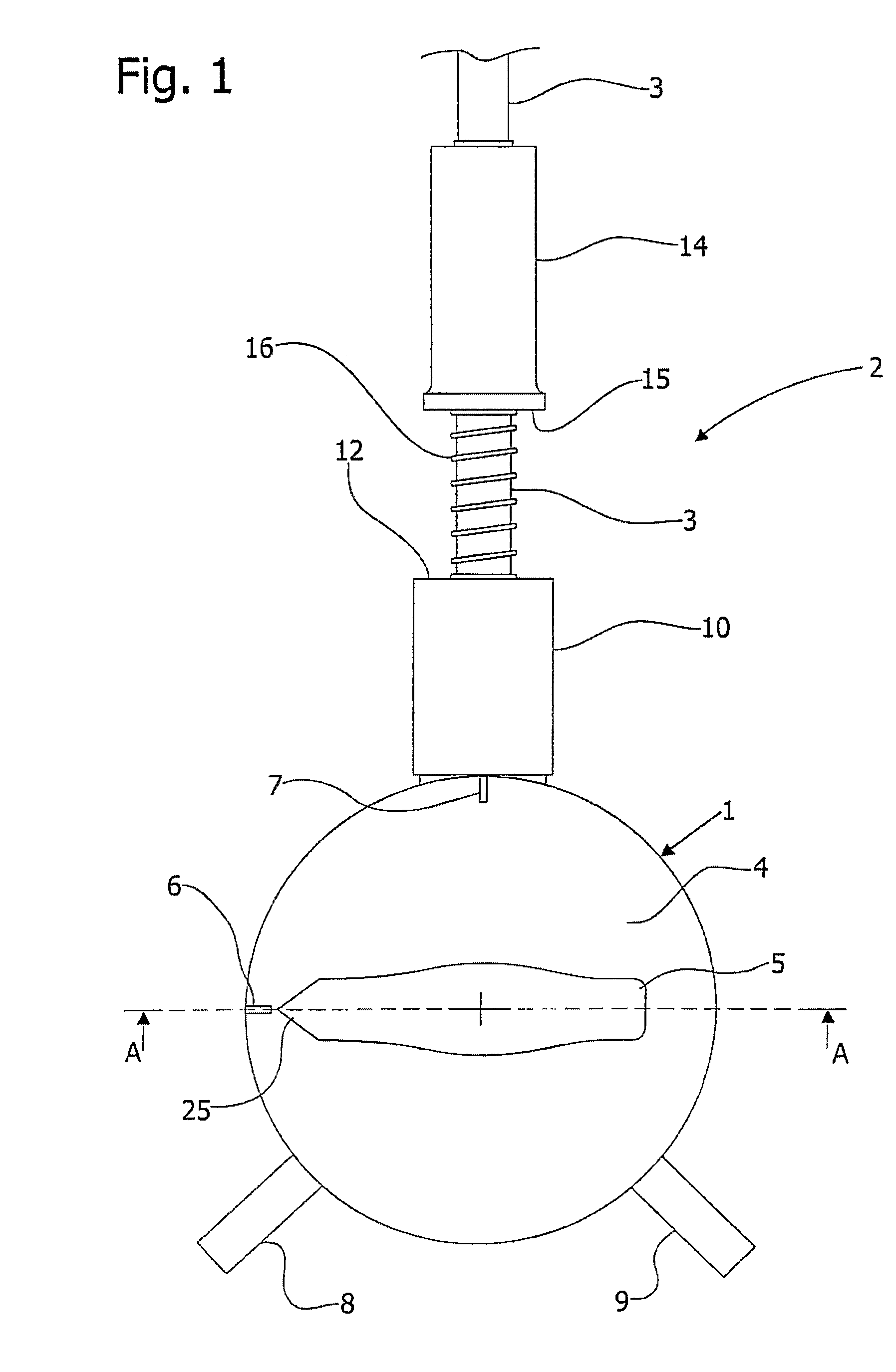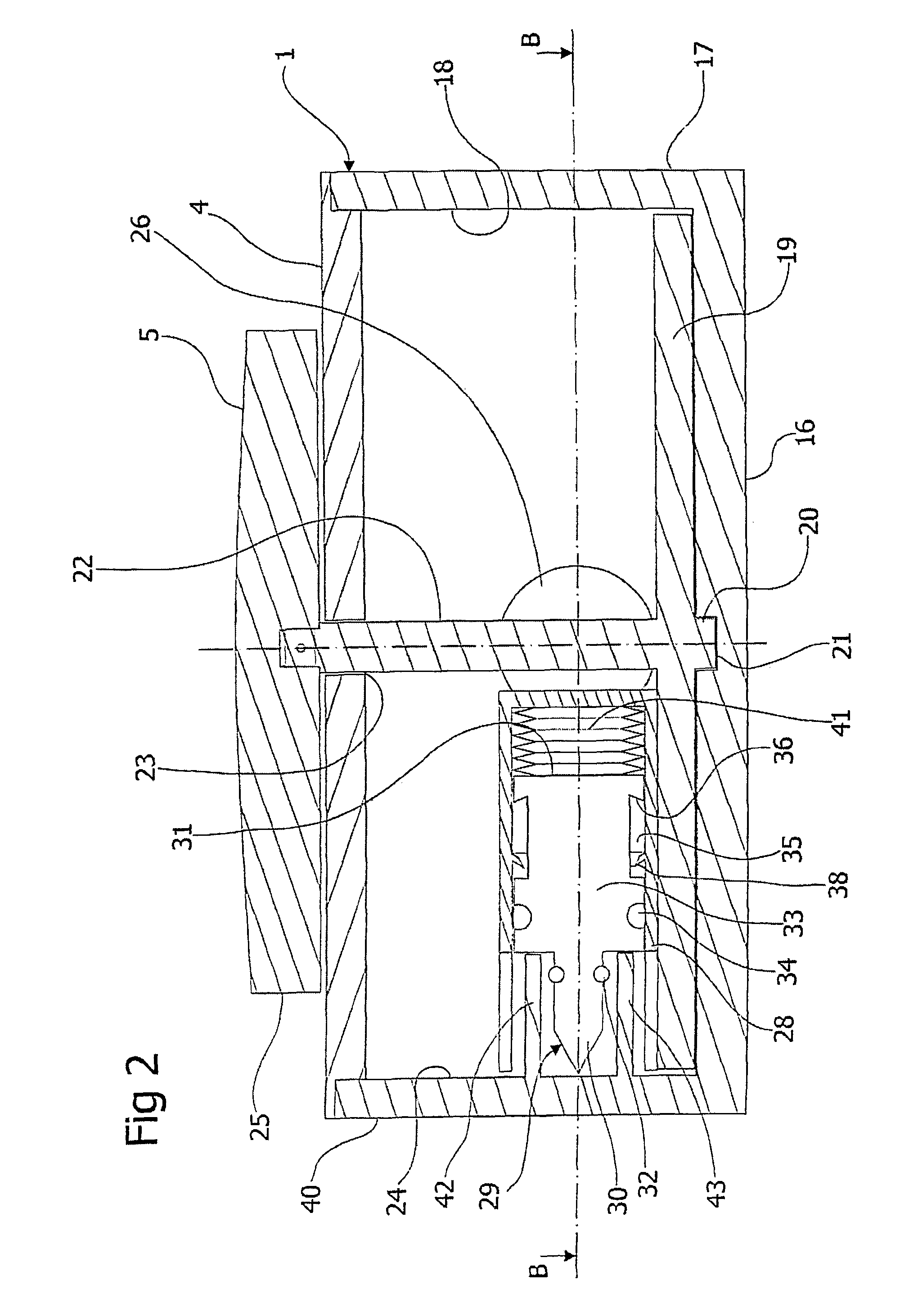Apparatus for applying and removing closing means from an end portion of a tubular element and the use thereof in peritoneal dialysis
a technology of peritoneal dialysis and a closing means, which is applied in the direction of tube connectors, multiple-way valves, catheters, etc., can solve the problems of no perfect anti-contamination device, window of potential infective contamination, and wear and tear
- Summary
- Abstract
- Description
- Claims
- Application Information
AI Technical Summary
Benefits of technology
Problems solved by technology
Method used
Image
Examples
Embodiment Construction
[0029]Referring to the drawings, in particular to FIG. 1, this shows an overall top view of one embodiment of the device for fitting and removing a closing means on an end portion of a tubular element according to the present invention.
[0030]It comprises a container 1 and a connector 2 for putting container 1 in fluid communication with a tubular element 3.
[0031]Container 1 is provided with a cover 4, on which a rotating actuator in the form of a handle 5 is mounted. The cover also has two reference marks 6 and 7, whose function will become clear later. Container 2 can have fluid communication with other tubular elements (not shown), for example two in number, via two lines 8, 9 present on its perimeter wall.
[0032]Connector 2 comprises a sleeve 10, to be fitted to a connection 11 of container 1, shown in FIGS. 3 to 7, which are cross-sections of the device. Sleeve 10 is closed distally (relative to container 1) by a wall 12, through which the end portion 13 of tubular element 3—visi...
PUM
 Login to View More
Login to View More Abstract
Description
Claims
Application Information
 Login to View More
Login to View More - R&D
- Intellectual Property
- Life Sciences
- Materials
- Tech Scout
- Unparalleled Data Quality
- Higher Quality Content
- 60% Fewer Hallucinations
Browse by: Latest US Patents, China's latest patents, Technical Efficacy Thesaurus, Application Domain, Technology Topic, Popular Technical Reports.
© 2025 PatSnap. All rights reserved.Legal|Privacy policy|Modern Slavery Act Transparency Statement|Sitemap|About US| Contact US: help@patsnap.com



